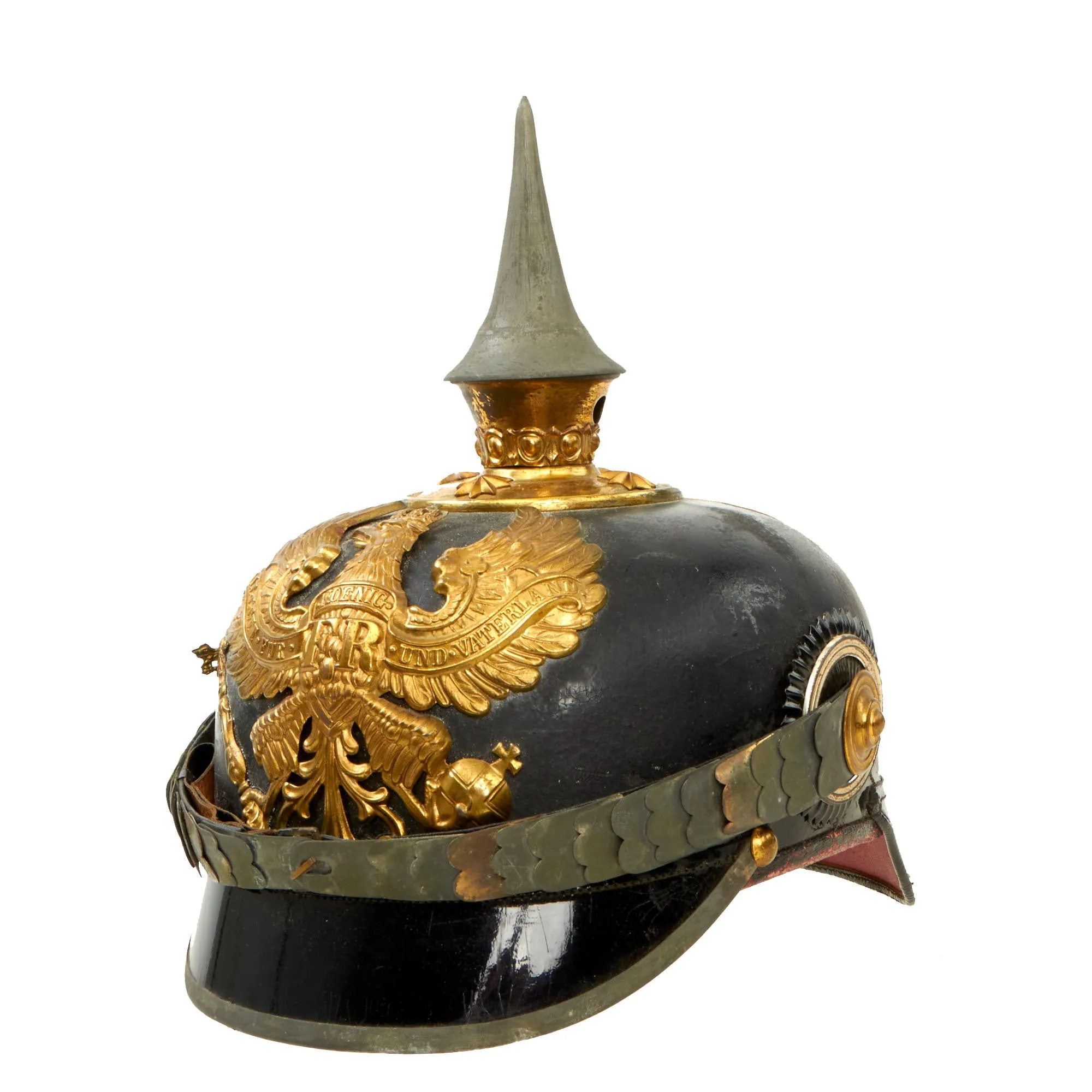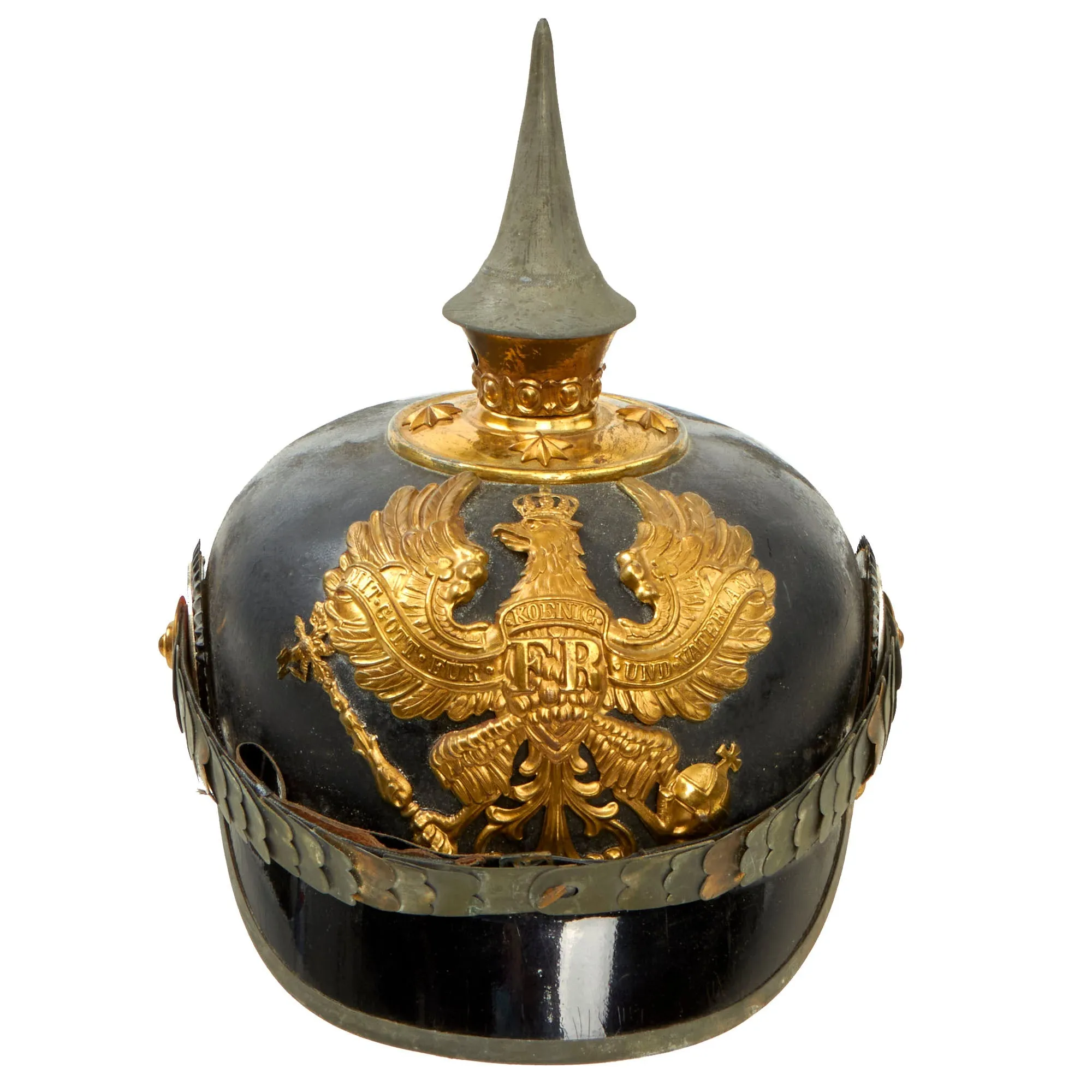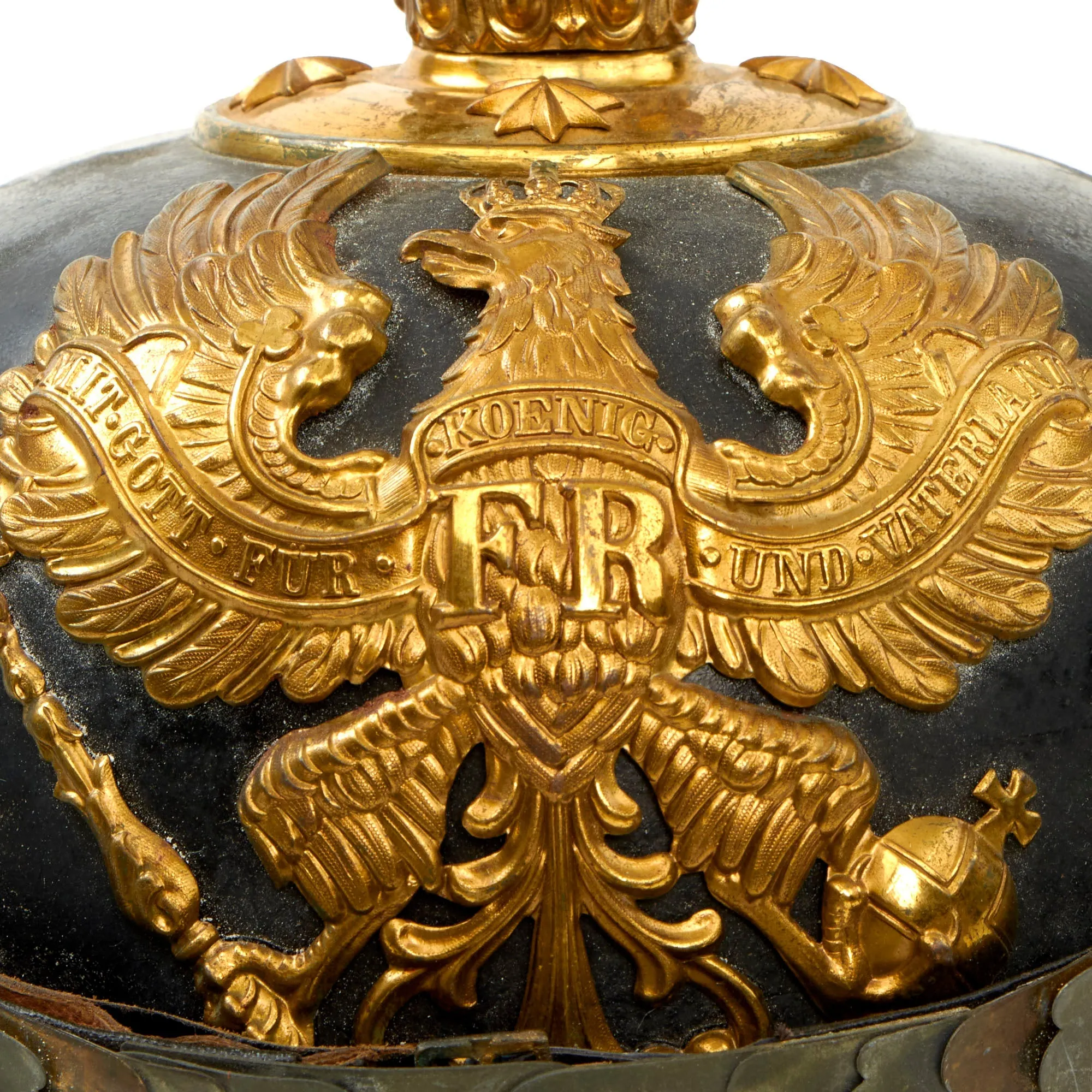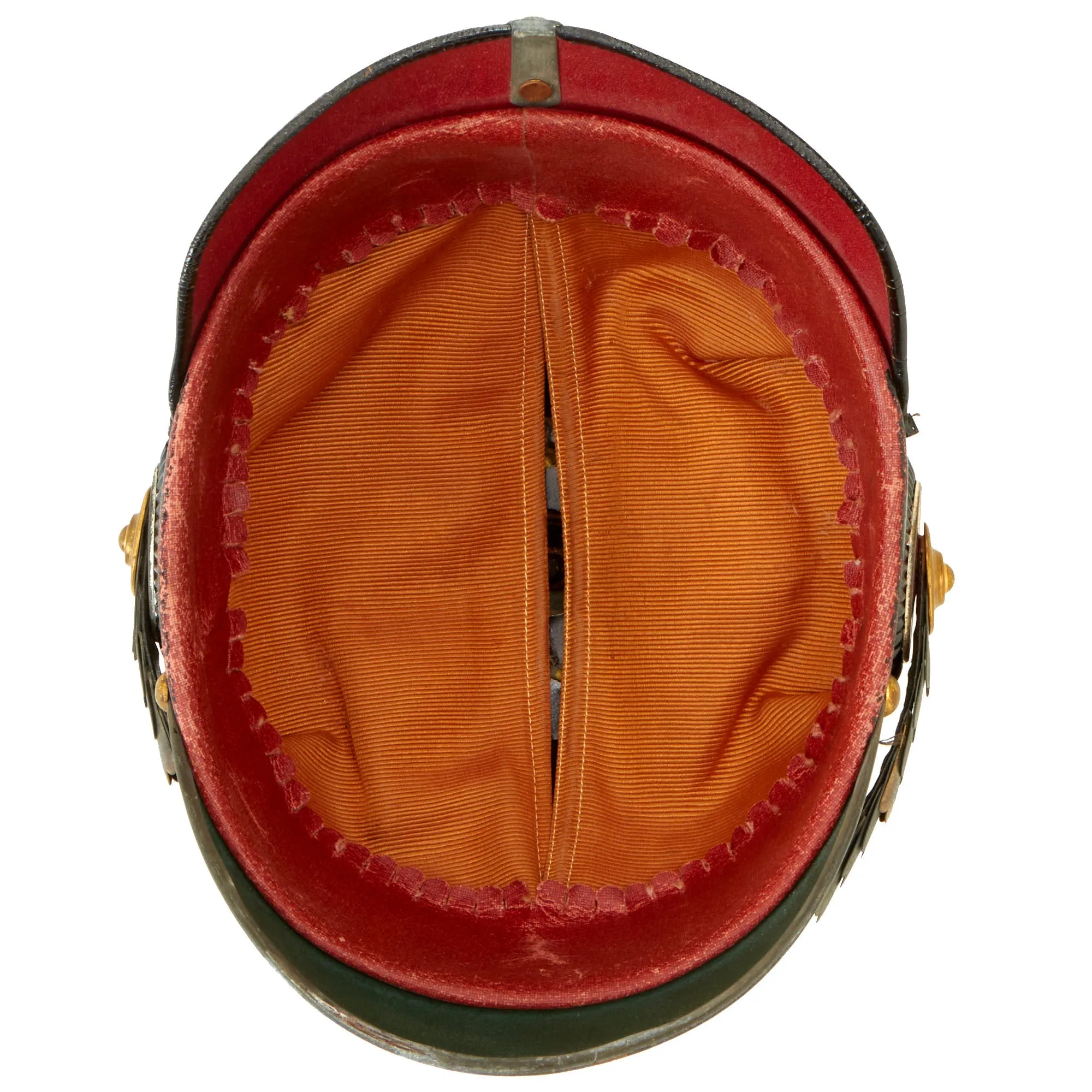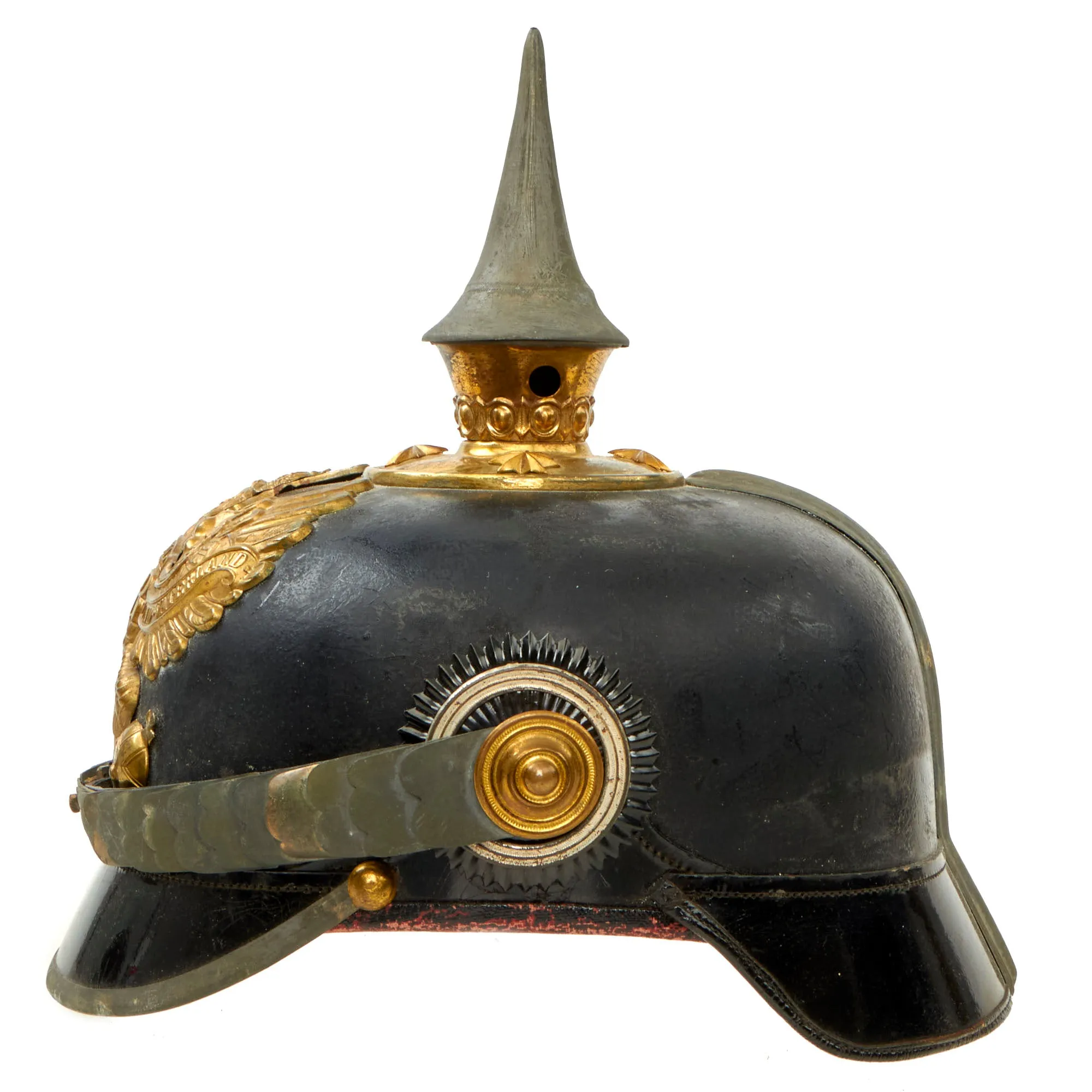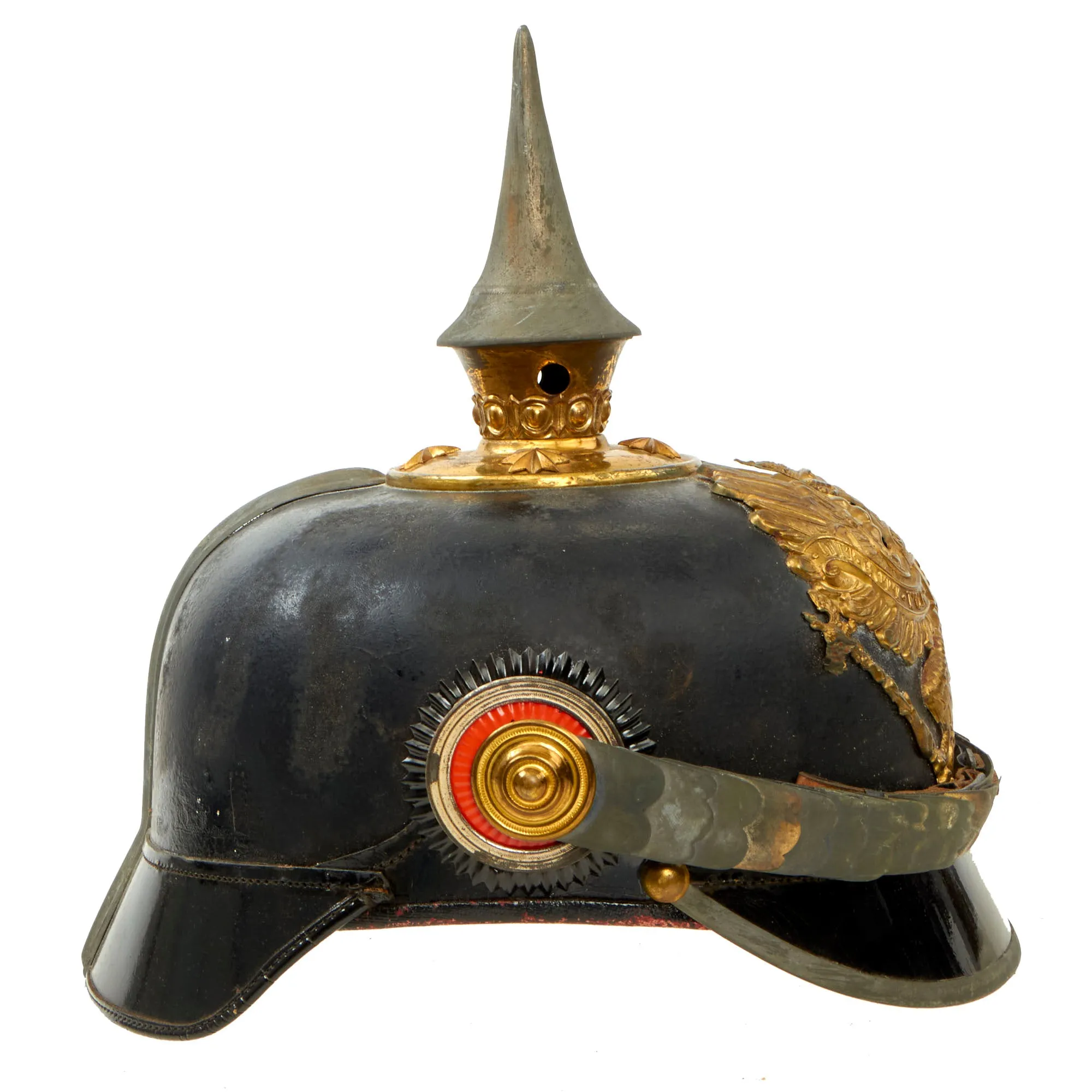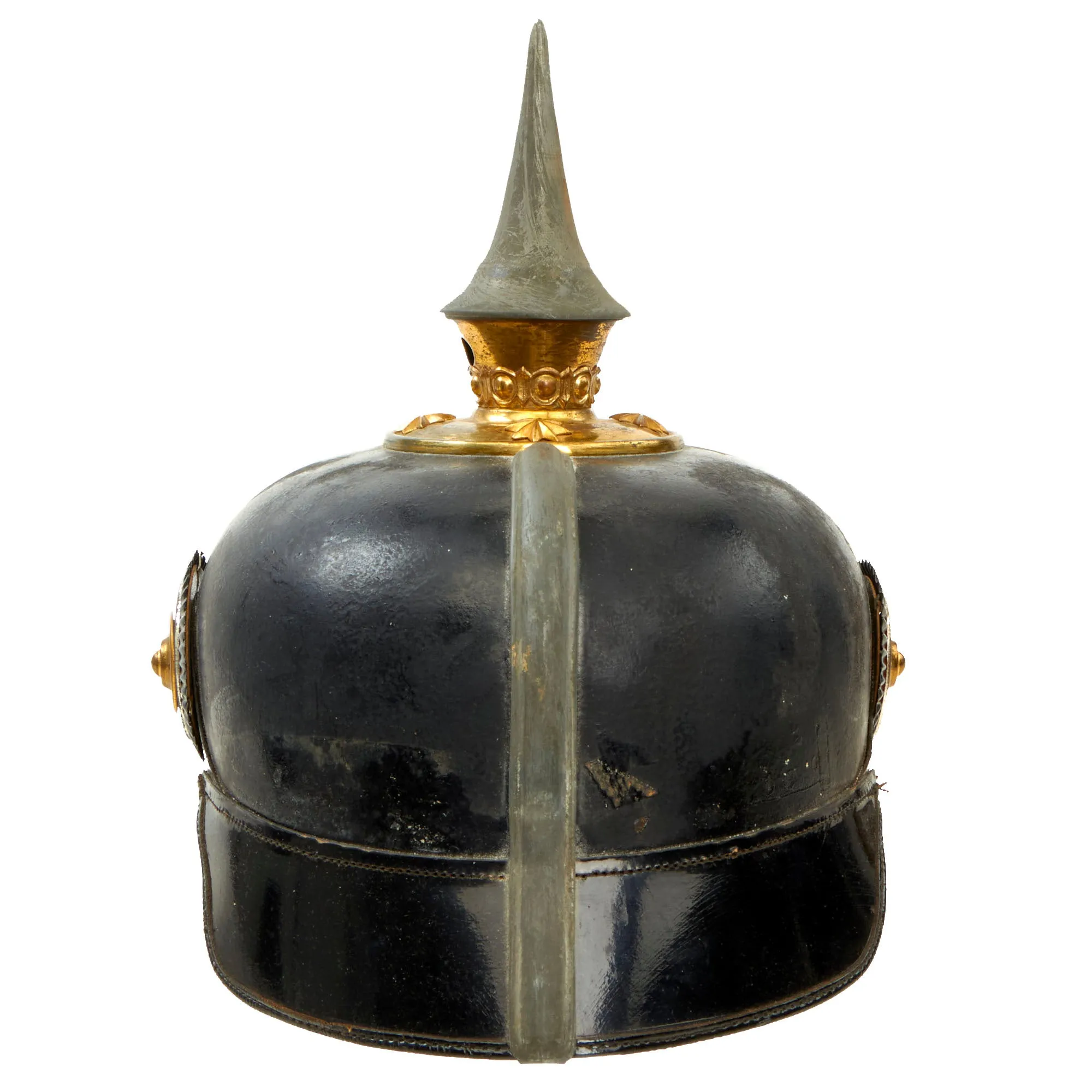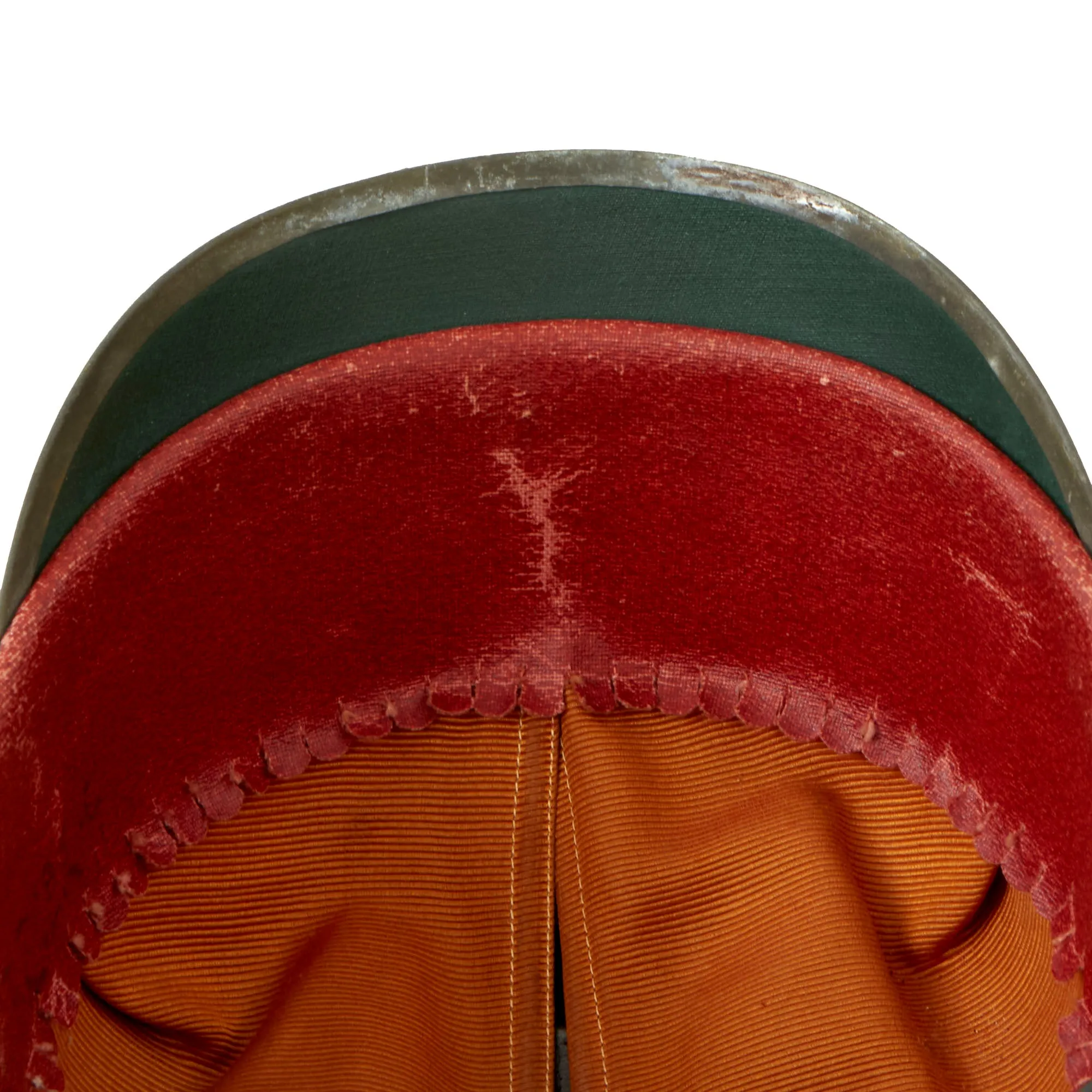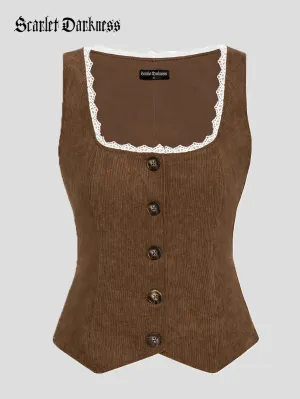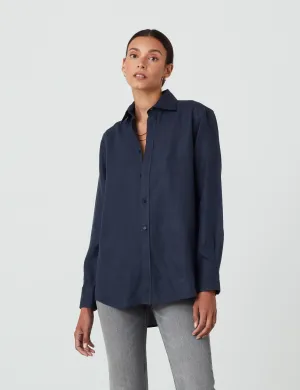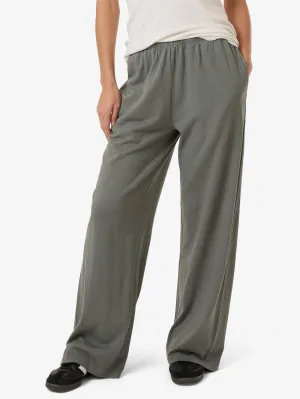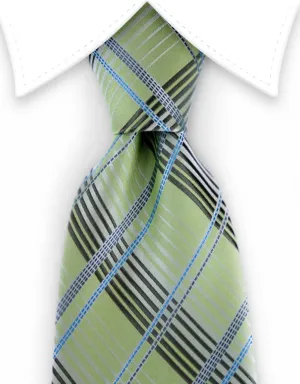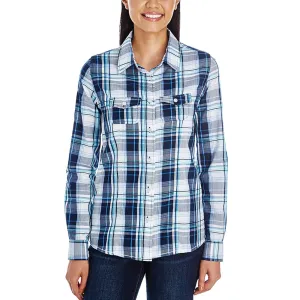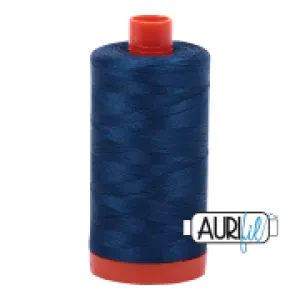Original Item: Only One Available. This is a fantastic and extremely rare example of an Ersatz Pickelhaube. Unlike most Ersatz and Pickelhaube in general, this is not constructed from boiled leather or rigid felt, instead it was produced from a material known as “Vulcanfibre”. Vulcanized fiber or red fiber is a laminated plastic composed of only cellulose. The material is a tough, resilient, hornlike material that is lighter than aluminum, tougher than leather, and stiffer than most thermoplastics.
In Aug 1914 the declaration of war resulted in the mobilization of the armies of the German-speaking contingents fighting together as the Imperial German Army. With mobilization for a modern war, the German Armies found themselves unable to quickly equip millions of soldiers. A shortage of cow hide from Argentina combined with the excessive draw upon German industry to outfit the massive army being mobilized, resulted in a severe shortage of leather for manufacturing Pickelhauben. To meet with this immediate shortage, the Germans began in 1914 manufacturing helmets from Ersatz (substitute) materials.
As the felt hat manufacturing industry was well established in Germany for hundreds of years, the hat industry stepped in to fill the void by producing Pickelhaube out of pressed and blocked felt manufactured from rabbit fur or shredded wool. One advantage to the Filzhelme (felt helmets) was that they were normally pressed from one-piece of felt which significantly reduced production time. Other industries met the challenge by producing helmets from Eisenblech (tin plate), Stahlblech (steel), Vulcanfibre (pressed fiber), cork, pressed paper, and other materials. Helmets can be found with brass or silver fittings and eventually M1915 grey steel fittings as the M1915 Pickelhaube was introduced. Surviving examples of Ersatz Pickelhauben can be found with or without front visor trims, rear spines, or Kokarden.
This is a great condition, smart-looking high-end officer pickelhaube from a Prussian Infantry Regiment, which was most likely used during World War One. The Pickelhaube of commissioned officers holding a rank from Lieutenant to Colonel are all identical in features, but not quality. The quality of helmets within these ranks depended entirely on how much the individual wished to spend. A lowly Lieutenant's helmet may be of much higher quality than one worn by a Colonel. As expected, officer helmets were of a much higher quality than the issued version and utilized the "squared finger" liners until 1880, when the internal leather sweatband and silk skull-cap came into use.
Regardless of the unit, officer Pickelhaube share common features such as: the undersides of visors are lined, Officer Kokarden are carried, and the "egg & dart" Perlring was matched with star-pattern spike base brads, and chinscales were worn. The officer's Pickelhaube was basically unchanged from 1871 to 1899 when it had a more domed shape, and from 1899 to the end it had more of a skull shape. Otherwise, with the exception of the addition of the Reich's Kokarde in 1897, the officer's Haube was mostly the same from 1871 to 1918. While most pickelhauben are made from boiled leather, the main body of this example looks to be made of a felt lined "vulcanfibre" type material, which was lighter and less likely to deform.
The overall condition of this officer's pickelhaube is very good. Most of the helmet's furniture is highly-detailed gilt steel and brass alloy, which now has a lovely aged patina. The Prussian wappen (coat of arms) features a large eagle with the King's motto, MIT GOTT FÜR KOENIG UND VATERLAND (With God for King and Country, i.e. Prussia). The Wappen is held in place by the screwposts and square nuts. The chin scales are in great shape, with complete leather backing and front buckle and clasp but almost no finish.
Both kokarde (cockades) are present, and are of high-end two piece construction, with detailed casting. In 1897 a new Reichs-Kokarde in Red-White-Black was introduced for all ranks to commemorate the 100th anniversary of the birth of Kaiser Wilhelm 1st, which is on the left side. The right side bears the black and white Prussian state colors. The paint on both is still almost completely intact, with the usual age related fading and checking.
The officer spike atop the helmet is intricately decorated at the base with "egg & dart" Perlring. This top spike is actually looks to be nickel or tin, which could be specially ordered, while from the perlring down it is brass alloy. The base cup still has all four 8 pointed stars, with some gilding still intact. The spike itself unscrews in the middle, which would allow the attachment of a fancy officer's plume for parades.
The helmet's interior reveals no depot marks on the back visor. The exterior is in great condition having no serious issues, just the usual light cracking. The shape of this pickelhaube is preserved excellently, with no sinking. The front and rear visor stitching looks to be fully intact, and hasn't rotted out as many do. The front still has its black lining, and the rear is lined in red.
The inside liner is still present as is the silk skull cap. This is one of the best officer liners we have ever seen and is in near perfect condition aside from minor wear.
Overall a very appealing Model 1897 Officer Pickelhaube helmet, ready to display!




